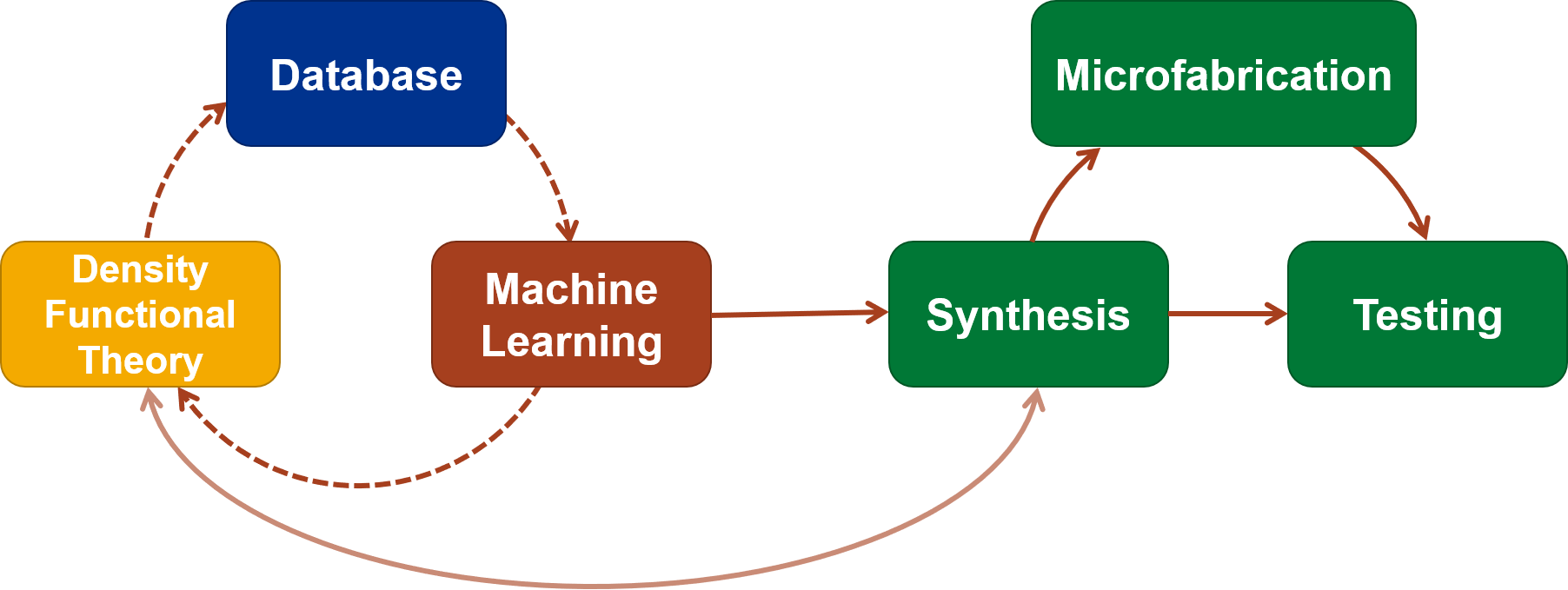CDI Project: Testbed Development for Measuring Electrical Properties of Functional Materials

Return to Functional Materials Use Case
PI: Tim Pope
Project Team: Amy Qiao, Chris Barrett, Yingge Du, Le Wang, John Schiffern, Hardeep Mahta, Tim Droubay
Project Term: December 2019 to October 2022
Key Science Questions:
- Can the topological properties of transition metal dichalcogenides be tuned by doping with alternative chalcogenides? How finely can we control doping?
- Can we discover novel memristor materials by controlling the oxidation state of the material?
- Can machine learning help us discover new, synthesizable materials?
- Can experiments improve predictive models?
Project Description: The project team is working to bridge the current capability gap for functional material characterization by leveraging existing facilities/equipment and a multidisciplinary team with expertise in materials, microfabrication, electronics, instrumentation, and data acquisition.
The team is working to synthesize and characterize novel 2D materials exhibiting quantized states that are highly sensitive to chemical variations in stoichiometry and crystal structure. Bulk crystals of transition metal dichalcogenides are grown using chemical vapor transport and subsequently delaminated into nanosheet structures for discrete analysis. Understanding the unique chemical dynamics impacting the performance of these materials with regard to quantum information systems is of significant interest within the community. It is well-aligned with CDI’s core theme.
A central component to this effort is the development of a microfabrication process that integrates synthesized thin films, nanosheets, and their heterostructures into prototypical device architectures, such as Hall Bars, for performance testing. In the case of metal oxide films, a memristor testbed is being purposely designed and built to accommodate in-situ resistivity measurements while controlling the temperature, pressure, and gas environment around the packaged devices. The outcome of this study will advance our fundamental understanding of complex chemical systems in several areas, including the relationship between oxidization/reduction and the atomic structure of a material, methods to control functions through chemical modifications, and the role of defects in observed performance. This project will ultimately seek to provide insights into the temporal evolution of atomically precise materials and assist in the development and optimization of robust, fit-for-purpose material systems.